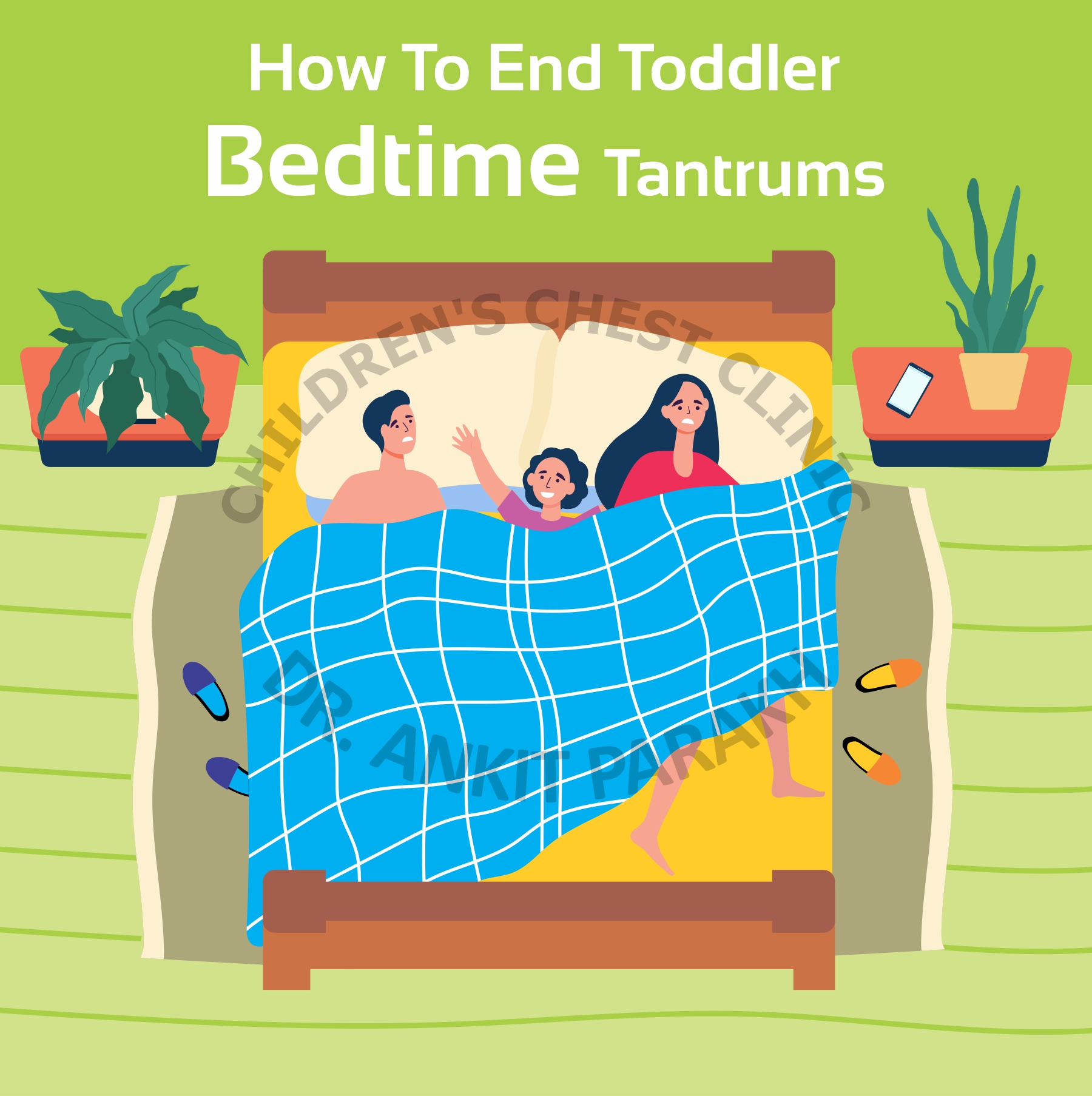The two most common sleep problems in young children are bedtime struggles and night awakenings.
Bedtime Problems
Bedtime problems, including stalling and refusing to go to bed are quite common in toddlers. Bedtime stalling behaviours include attempts to delay bedtime or acts done to not remain in the bed like e.g. “one more story please”, “water please”, “I need to go to washroom” etc. Bedtime problems are caused by inadequate enforcement of bedtime limits by parents. Inconsistent parental response provides intermittent reinforcement, which maintains the child’s inappropriate behavior. Examples of limit-setting problems include inconsistent bedtime during the week, sleeping while watching television or a mobile phone, sleeping in different areas like the drawing room vs bedroom, etc. Bedtime struggles lead to a reduced sleep time leading to behavioural problems. In addition the sleep of parents gets disrupted with associated problems.
Troublesome Night Awakenings
Most healthy babies in the initial few months of life wake up frequently. However, the sleep pattern gradually gets consolidated and by approximately 3-6 months of age most babies are able to sleep through the night. All healthy infants and children wake up briefly but go back into sleep on their own. However, 25-50% of otherwise healthy babies have night awakening which is prolonged and it is difficult to get the child back to sleep. These troublesome night awakenings can persist in future years. These troublesome night awakenings lead to a fragmented sleep in children. This is manifested as behavioral problems such as irritability, hyperactivity and temper tantrums. In addition, a child’s night awakenings also disrupts parents sleep leading to stress, anxiety and health issues in parents.
The most common cause of troublesome night awakenings is inappropriate sleep-onset associations. Sleep-onset associations are things which a baby gets dependent on to fall asleep. Some sleep associations could be appropriate like thumb sucking at bed-time or keeping a favourite soft toy besides. Some sleep associations are considered to be inappropriate, as they may not be available throughout the night e.g. being rocked to get into sleep or held in lap by the parent to go into sleep. When the child gets night awakenings but does not get these sleep associations, the nocturnal awakening becomes persistent and prolonged. These trouble night awakenings can persist for many months and years. Some children can get night awakenings due to medical illnesses like infantile colic, gastroesophageal reflux disease and any other chronic medical illness which can disrupt a child’s sleep. These conditions should be evaluated.
In many children bedtime struggles and troublesome night awakenings are seen together.
How do we treat Bedtime problems and night awakenings?
A consistent bedtime routine and removing the inappropriate sleep onset associations remains the basic management of bedtime struggles and problematic night awakenings. A consistent bedtime routine needs to be followed which can include soothing activities like by bathing, gentle massage, wearing night clothes and storytelling. All electronic items should be avoided near to the bedtime. Children’s sleep time needs to be consistent on all days. There are many methods to eliminate inappropriate sleep concept associations. This requires “sleep training” and involves techniques like extinction, graduated extinction and fading. With these techniques significant reduction in the bedtime troubles and night awakenings is seen within a few weeks.



